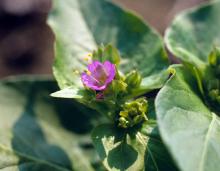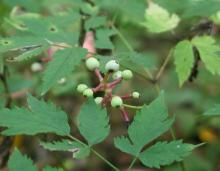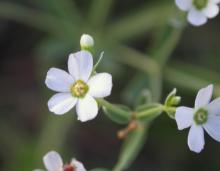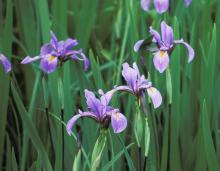Wildflowers, Grasses and Other Nonwoody Plants
Media

Species Types
Scientific Name
Mirabilis nyctaginea
Description
Wild four-o’clock grows in fields, prairies, waste places, roadways, and railroads, often in poor soils. It’s called “four-o’clock,” because the magenta flowers don’t open until late afternoon.
Media

Species Types
Scientific Name
Actaea pachypoda
Description
The flower clusters of white baneberry have many white stamens that persist after the petal-like sepals have fallen off. They bear open clusters of white berries with a small purple dot on each one. They look like the porcelain eyes of dolls.
Media

Species Types
Scientific Name
Euphorbia corollata
Description
With widespread sprays of small white flowers, flowering spurge looks a lot like the "baby's breath" so popular with florists. Each little "flower" has 5 white false petals surrounding a cup of tiny yellow male flowers and a single female flower.
Media

Species Types
Scientific Name
Iris virginica
Description
Ten species of iris grow wild in our state, but only four of them are native. Of our native irises, this one is the most common. But drainage “improvements” are eliminating the habitat of this beautiful wetland wildflower.
See Also
About Wildflowers, Grasses and Other Nonwoody Plants in Missouri
A very simple way of thinking about the green world is to divide the vascular plants into two groups: woody and nonwoody (or herbaceous). But this is an artificial division; many plant families include some species that are woody and some that are not. The diversity of nonwoody vascular plants is staggering! Think of all the ferns, grasses, sedges, lilies, peas, sunflowers, nightshades, milkweeds, mustards, mints, and mallows — weeds and wildflowers — and many more!





















